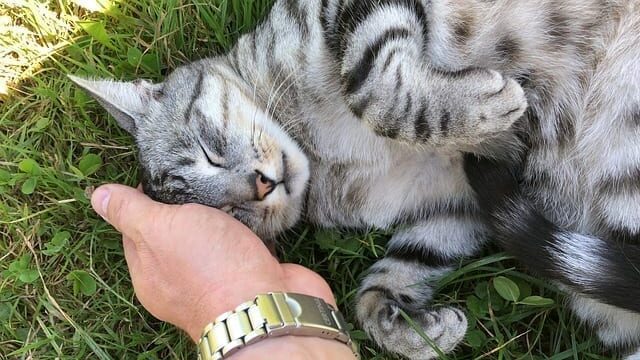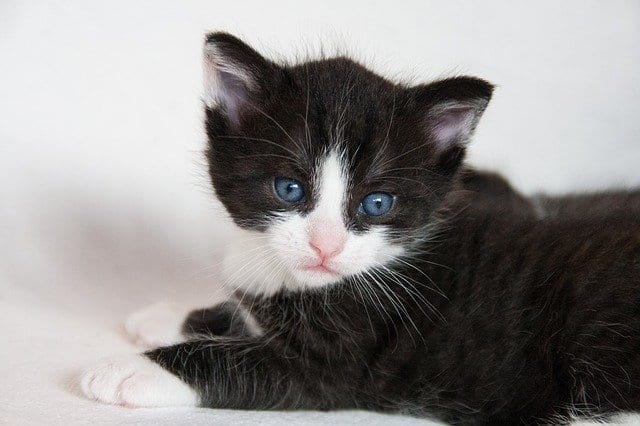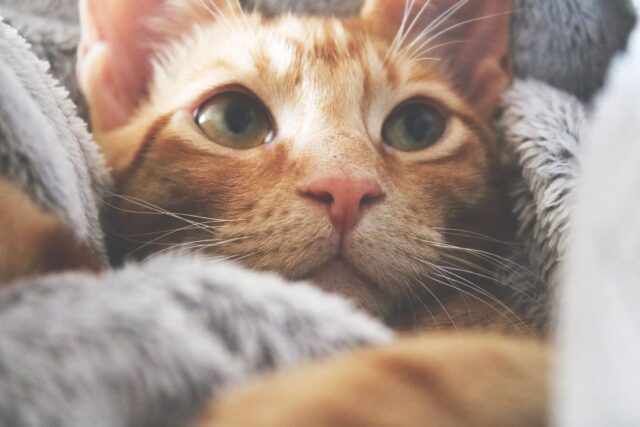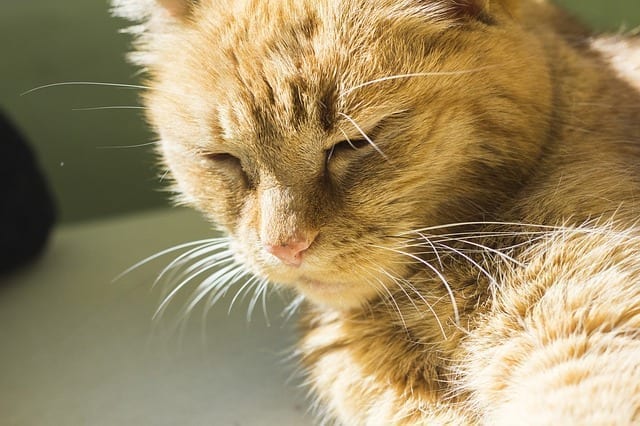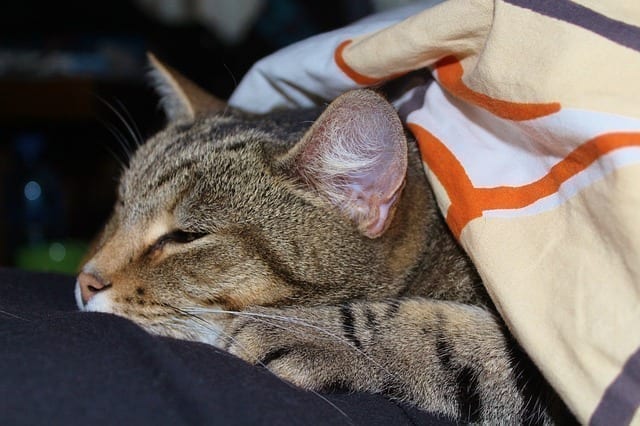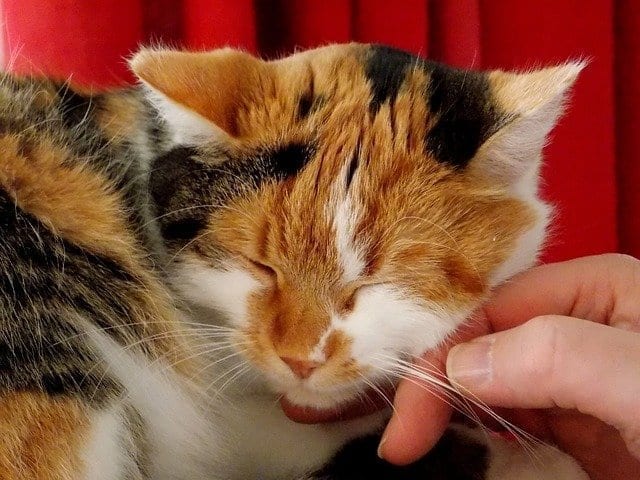A cat’s purr is a thing of magic. And like all things magical, purring mystifies us as we still haven’t quite puzzled out the full mystery behind those rumbles.
While the how is still baffling, humans are starting to get a better grasp on why cats purr. We definitely know the purr can be a deep rumble of pleasure, but we’ve also learned purring provides cats a mechanism for coping with stress as well as a healing tool for the body.
As cats spend much of their time at rest in attempts to conserve energy for the hunt, Elizabeth von Muggenthaler with the Fauna Communications Research Institute, also suggests, “it is possible that purring is a low energy mechanism that stimulates muscles and bones without using a lot of energy.”
More evidence cats are evolutionary masters!
Purring is a feline behavior we’re all familiar with, but how much do we really know about the purr? Read on to learn the how and why of cat purring, or at least as much as our feline enigmas have yet allowed us to know!
How Do Cats Purr?
Purring still mystifies us as we haven’t quite figured out exactly how cats do it. Felines don’t actually have a specific organ for purring. But the most accepted theory behind the mystery explains cats purr by vibrating their voice boxes.
Pets WebMD speculates purring happens in this way:
- First, “a rhythmic, repetitive neural oscillator” unique to felines sends out a brainwave to the muscles of the larynx.
- The muscles then begin to vibrate at a “rate of 25 to 150 vibrations per second (Hz)” and forces a separation between the cords.
- These brainwave-activated vibrations occur during inhalation and exhalation, continuing the separation of the cords and making the rhythmic noise that lulls cat lovers into a happy trance.
While this is still just theory, science remains curious about the purring mystery and continues to search for the definitive answer behind this feline magic.
Why Does a Cat Purr?
Communication
By the time we meet our cats, they’ve usually got their purring skills practiced to perfection, but did you know kittens can’t purr at birth? Nor can they hear or see, but kittens do feel their mother’s purr. At about two days old, kittens then begin to purr in response to their mothers and siblings. Purring is one of the first ways in which a cat communicates with the world around her.
And as she grows, a cat will continue to use purring as a way to communicate with you and other cats. But just what are cats saying when they purr?
Much of the time, that little motor is telling you:
Happiness!
Joy!
Contentment!
Your cat is telling you this and more with those deep rumbles of pleasure. That you’re honored with a purr of pleasure means you’re a human worthy of the effort. You’ve offered security and comfort, two of a cat’s favorite things!
But cats can also communicate a need for comfort through their purring.
Dr. Russell Hartstein, CDBC, CPDT-KA, Fear Free Certified animal behaviorist with FunPawCare.com explained to Parade, “Making sure your cat is actually purring and not chirping, hissing, growling or howling, caterwaul, or the prosodic of the sound in conjunction with the overall environment and situation tell a lot about the vocalization. You cannot just take a sound in isolation without taking the entire cat and the cat’s body language into consideration.”
If you hear your furry darling purring, but she’s acting upset, ill, or frightened, you can take this as a sign something is wrong. Your cat needs comforting.
Comfort
Cats will sometimes purr when sick, stressed or injured. It seems at odds to hear a feline in distress purring, but that low rumble helps cats to soothe themselves. As a child turns to thumb-sucking or hugging a blankie, cats use purring as their pacifier.
An example of this purring to comfort behavior can often be seen when it’s time to visit the vet’s office. Being outside their territory in an environment with strange people and other animals is a major stressor for cats. So, if you’ve ever heard your furry one purring at the vet, chances are kitty isn’t happy, but more trying to console himself.
How does purring comfort a cat? The low frequencies of purring are known to induce a more peaceful state when humans pet their cats, but it turns out the purr comforts the cat too. It’s thought felines are consoled by purring as it recreates the sense of maternal comfort from their kittenhood. Plus, the low vibrational range is known to have a therapeutic effect on cat bodies, allowing them comfort as they recover from stress, illness, or injury.
Humans find comfort in it too. Holding or petting a purring cat calms us as well. By lowering our stress levels blood pressure, our purry friends are lowering our chances of developing cardiovascular disease brought on by stress.
Healing Through Purring
Remember how felines have been found to purr at frequencies of 25 to 150 vibrations per second? Here’s an interesting natural correlation. The healing of bone, muscles, and other tissues in both feline and human bodies occurs within those rates. A study of cat purrs performed by Fauna Communications found “vibrations between 20-140 Hz are therapeutic for bone growth/fracture healing, pain relief/swelling reduction, wound healing, muscle growth and repair/tendon repair, mobility of joints and the relief of dyspnea.”
While its origins are still a mystery, the purr has strong healing power!
Interesting Facts about Cat Purrs
- The smaller felines, like the domestic cats, bobcats, lynxes, cheetahs and pumas, have a recognizable rumble.
- Big cats, like lions and tigers, have partially ossified hyoid bones and researchers believe this flexible bone keeps them from producing purrs. The hyoid bone of smaller cats is completely hardened and might be one factor of in the production of the rumbling sound.
- Mothers in labor purr while giving birth in order to self-soothe.
- One particular frequency of purring is similar to the frequency of a baby’s cry. This has led some to believe cats developed the purr as a tactic for grabbing human attention.
Now that you have the information behind purring, now it’s time to make your kitty purr with treats and chin scritches!
H/T: www.parade.com


